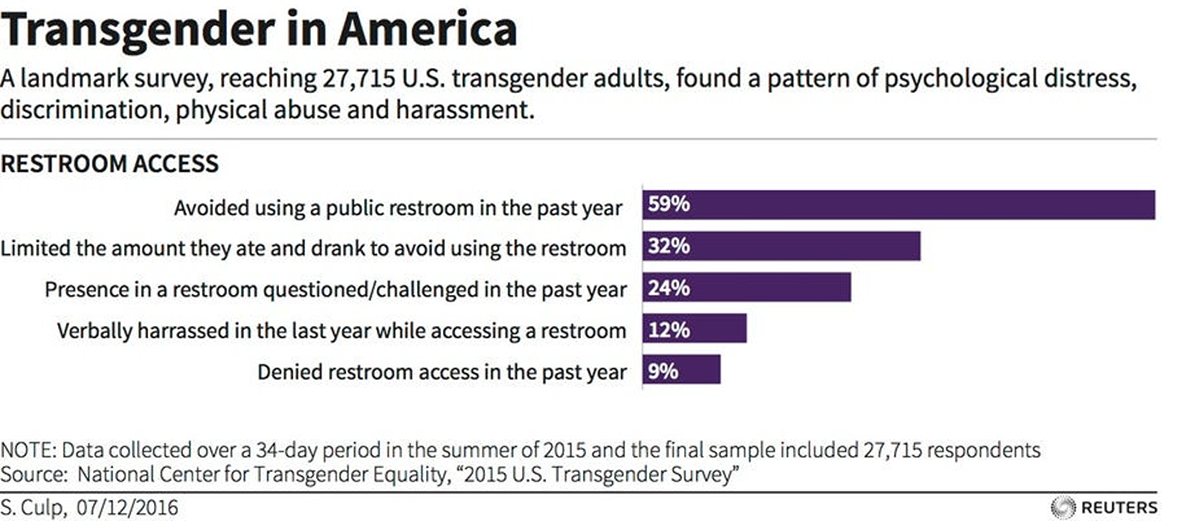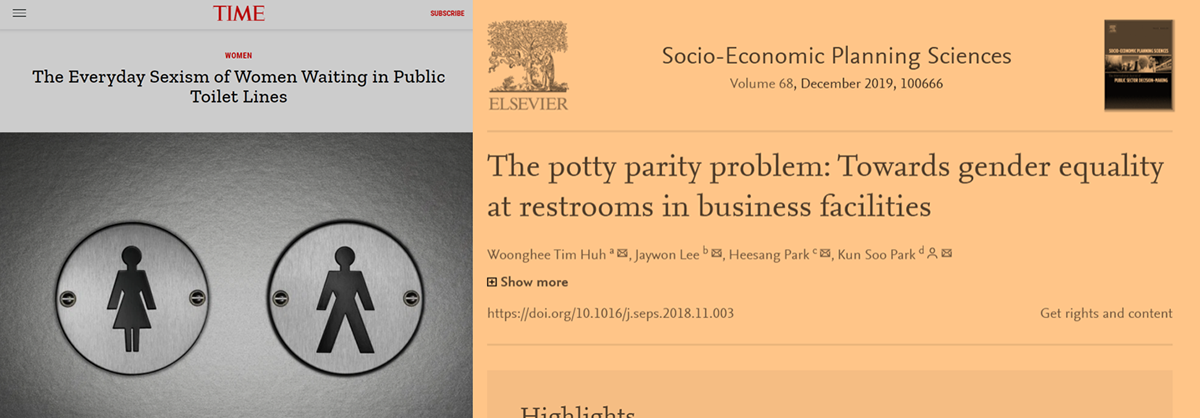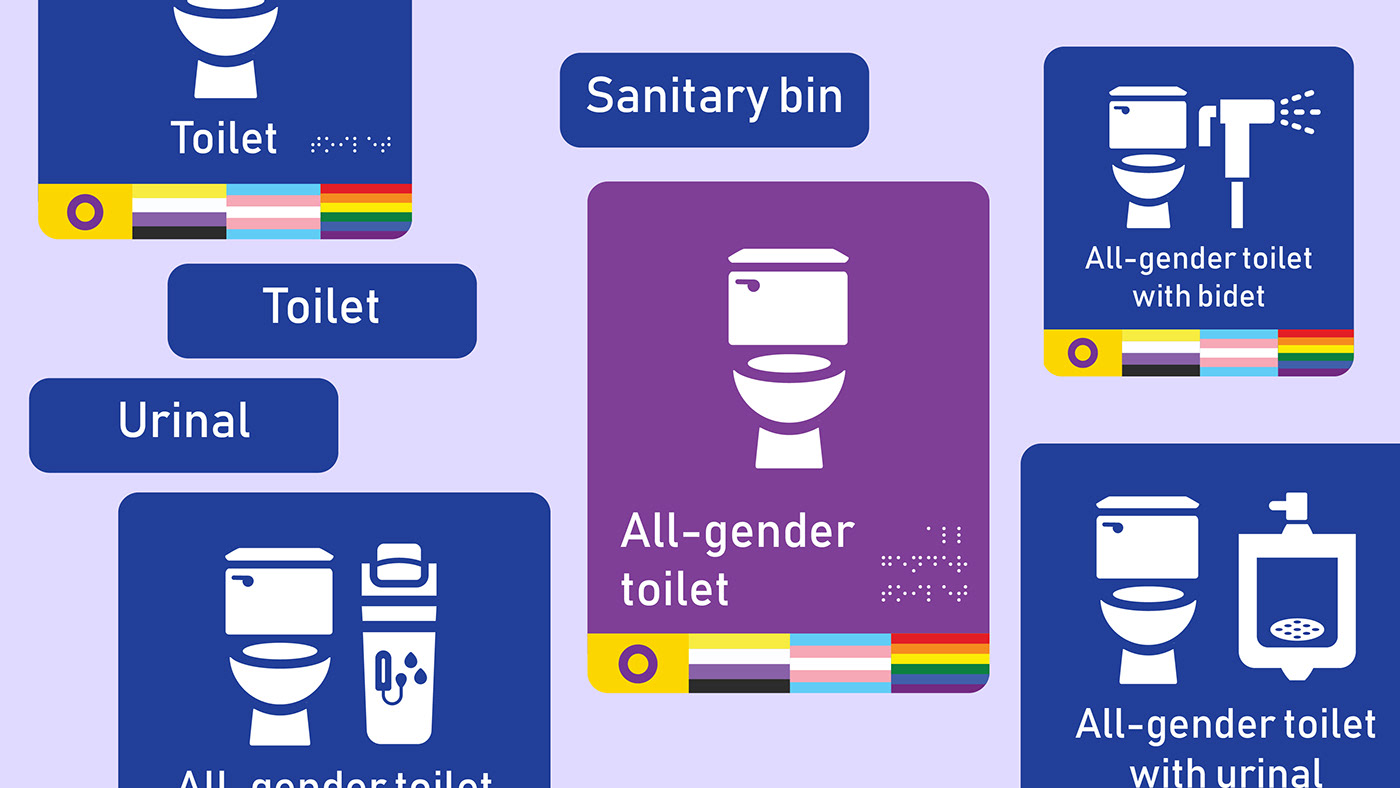
Pitching and planning for all gender toilets
What is this?
This is a pitch to run a co-design All gender bathroom project. It was created in 2020 for a health service in Victoria, Australia.
This is a pitch to run a co-design All gender bathroom project. It was created in 2020 for a health service in Victoria, Australia.
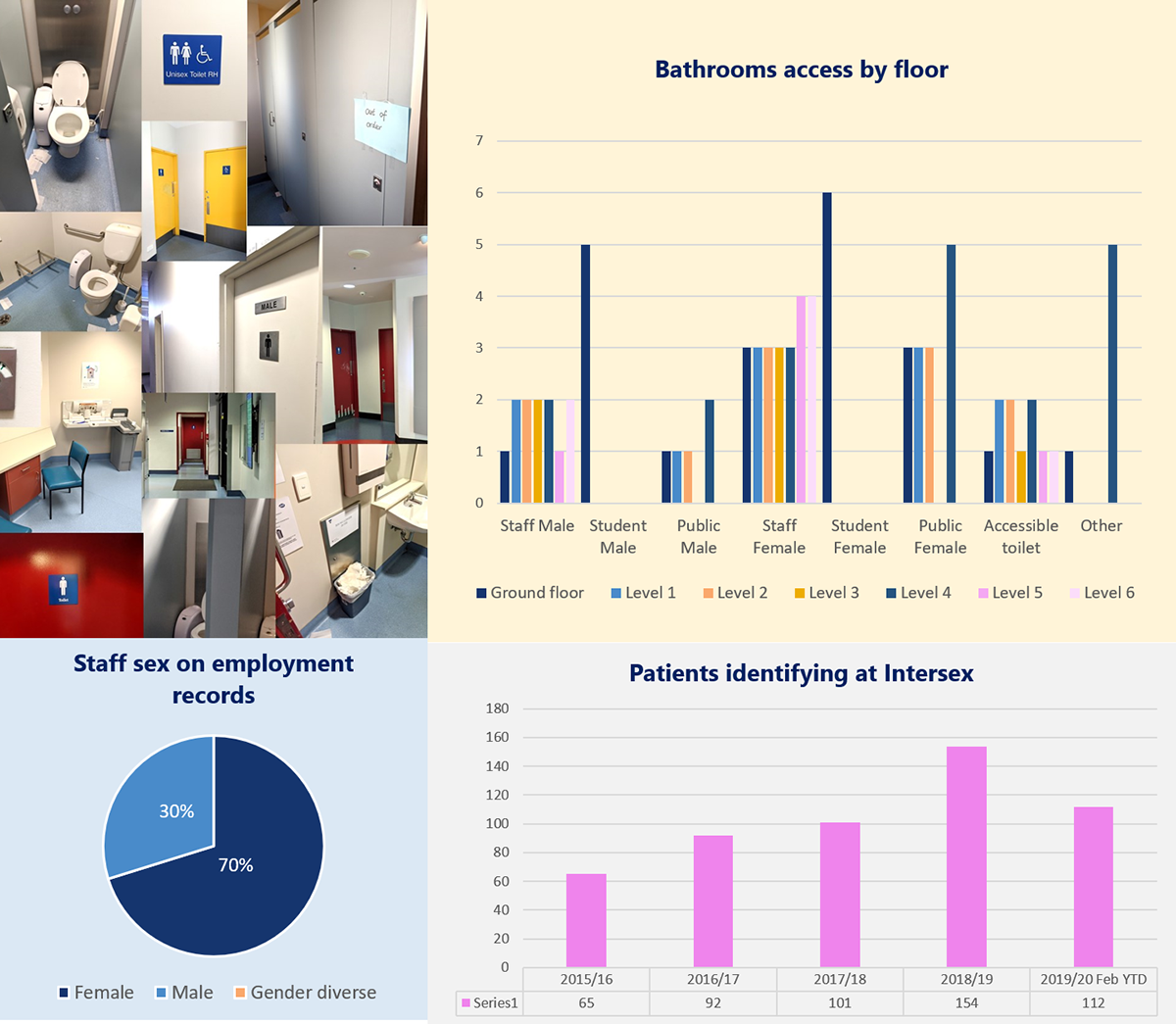
🏁 Where did we start? The data
What did our bathroom situation look like?
Not great. All genders have limited access to bathrooms at [our organisation].
Female bathrooms typically have pods of two, while male have one cubicle and a urinal.
Female bathrooms typically have pods of two, while male have one cubicle and a urinal.
In a nutshell:
• Across six levels, staff cubicles total: 23 female and 12 male
• Student cubicles are confined to ground level: 6 female and five male
• Across six levels, public cubicles add up to: 12 female and four male
• All our unisex toilets are also for people with disabilities
Apart from male and female segregation we also have bathrooms for people with disabilities, parents, staff, students and one changing places facility.
What factors did we need to consider around bathroom access?
The sex of our staff and visitors. Although our visitors at [location] are evenly split, a large proportion of our staff are female.
Around 68% of full-time staff and 73% of part time staff. It averages out to about 70% and it is a consideration for bathroom access at the [location] today.
Looking at the numbers for the last couple of 5 years something worth noting only 0.31% of our consumers are reporting to us as intersex despite a 1.7% global incidence of the sex chromosome variation. The question is are people not telling us or are they avoiding us. Does our space have any impact on their wellbeing or sharing of their intersex status?
Cultural safety and religious protocols also needed to be considered in the potential re-design of bathrooms. With many Muslim staff any interventions needed to be faith-friendly and appropriate.
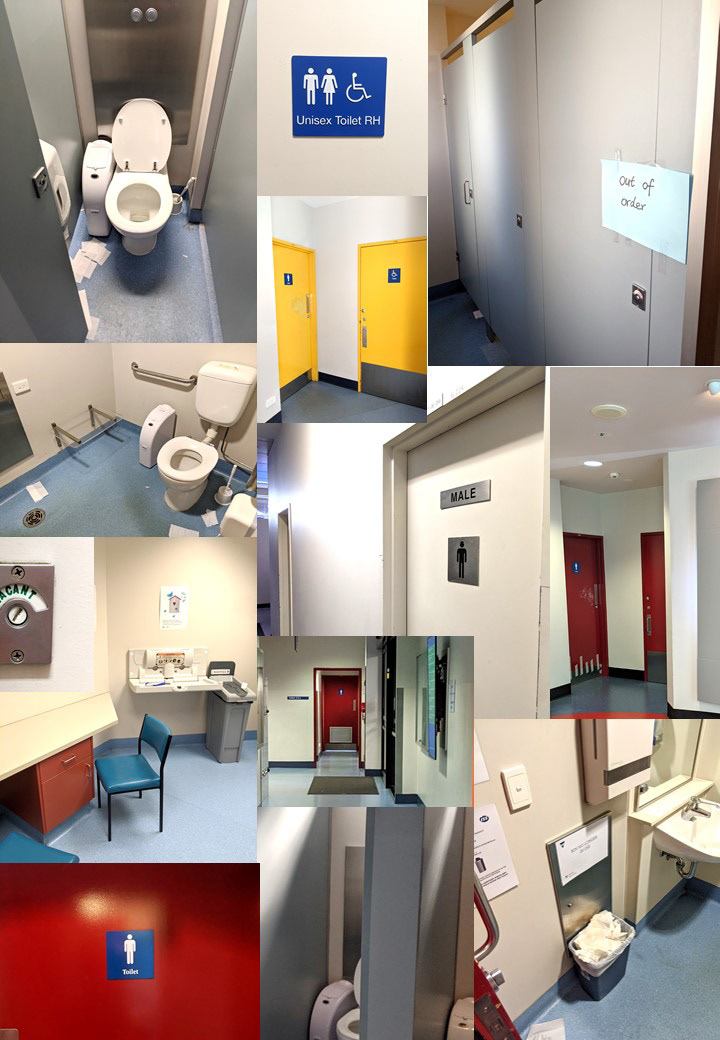
🏆 What were the benefits of all gender bathrooms?
1. Improved speed of access to bathrooms for women, especially in older buildings designed with a gender bias towards male spaces
2. “Elderly people, those with disabilities, as well as children and their carers, are all likely to welcome the greater flexibility of another ‘unisex cubicle’ especially if they feel they do not qualify to use the official ‘disabled toilet’ but are unable to use a regular cubicle” (Wiseman, 2019)
3. Increased access to cubicles for people who have paruresis “shy bladder” a social anxiety. Paruresis reportedly affects between 2.8% and 16.4% of the population. Having access to a cubicle can make a big difference to people around comfort and privacy. (Kuoch KLJ, 2017)
4. More privacy for people who use the bathroom cubicles to get changed, stretch, take medications or breast-feed or pump milk.
If you really want to get into the details, we’ve compiled a detailed case.
Get in touch if you'd like to see it.
Get in touch if you'd like to see it.
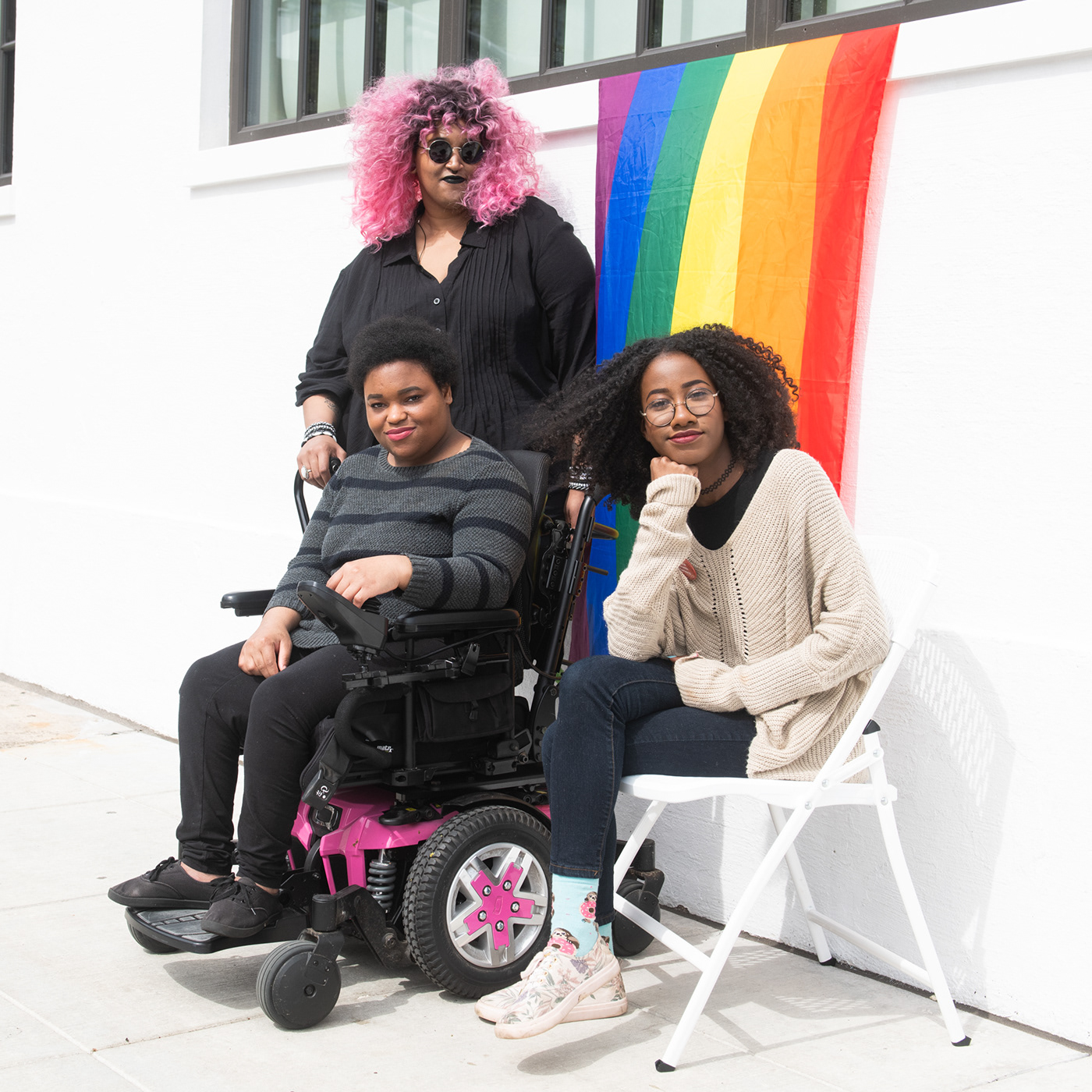
Three Black and disabled folx (a non-binary person holding a cane, a woman sitting in a power wheelchair, and a woman sitting in a chair) partially smiling at the camera while a rainbow pride flag drapes on the wall behind them. This photo was taken by Chona Kasinger for Disabled And Here project page.
⚖️ What helped us build a case? Living experts
👁️👁️ We already had some examples of interventions from around the world, they looked achievable
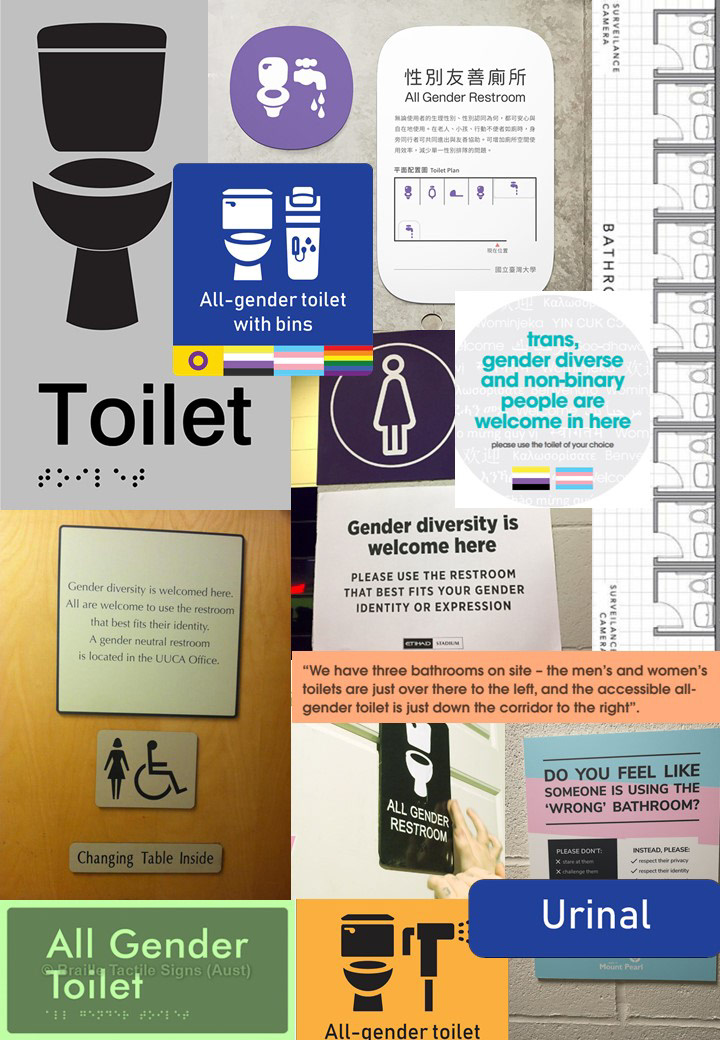
☠️ What were the risks?
There was greater legal risks associated with not acting on this issue than starting to explore it as a team.
We recommend using a co-design approach to raise awareness about this topic and to involve as many staff as possible so they can also advocate for change. We have outlined the risks in our draft positioning paper.
📅 What did the project plan look like?
We decided that a 3-month Experience-based co-design process would work well for this topic. Despite the need for action we feel it is very important that we involve staff and gender-diverse people in our decision-making and design. This means that implementation is a slower process.
The advantage of this is it then becomes an opportunity to raise awareness, educate staff on the issue of inclusion and allows us to co-design with the LGBTQIA+ community. The benefit of taking our time is we can unlock funds later and we have run a pilot to prove our interventions are safe and work.
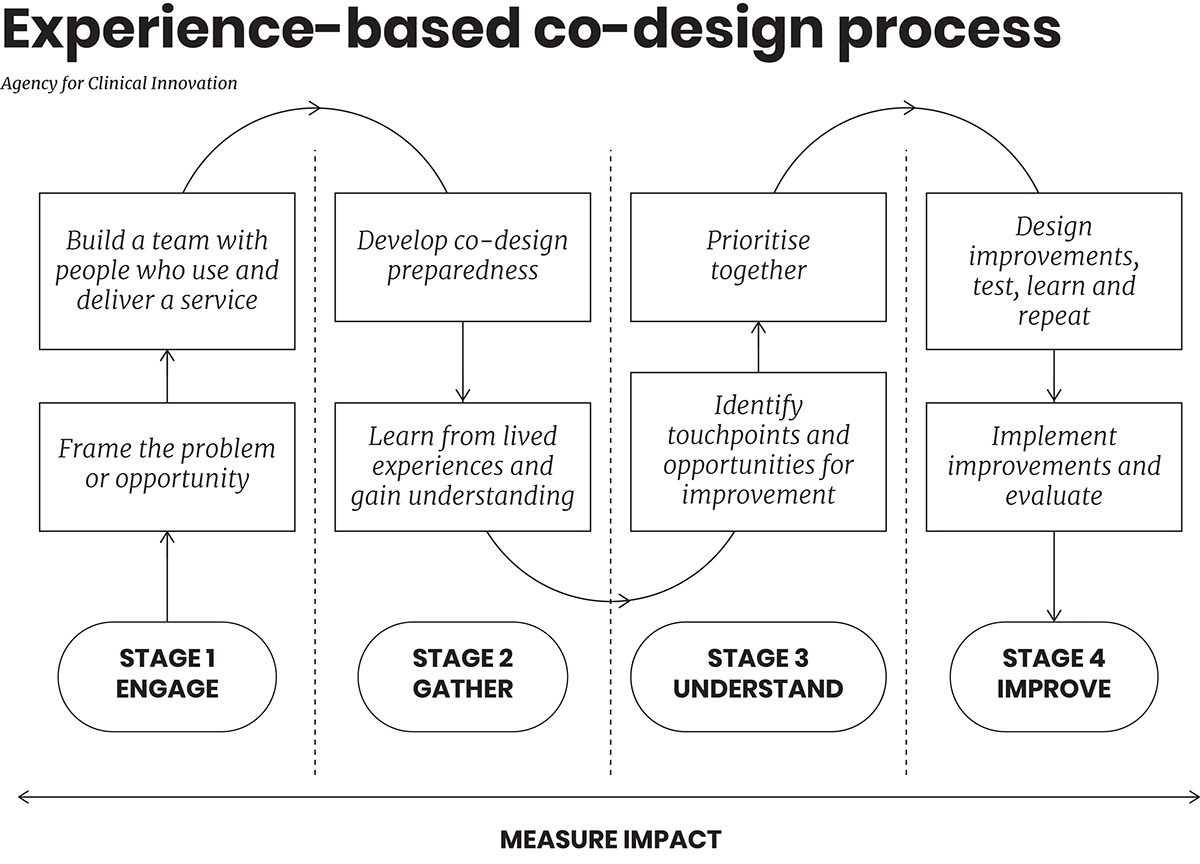
💸 What might a project cost?
We’ve scoped a project approach that takes 3 months, and costs [$] for:
• Reimbursing gender diverse service users to be in the project team
• Run educational session via [local advocacy group e.g Zoe Belle Gender Collective]
⏭️ Where to next?
Just as we were about to launch COVID-19 hit so we are on pause for now. But at least all the decision makers know that any re-design of bathroom spaces should consider the safety and needs of the LGBTQIA+ community.
🧲 Want to pick up where we left off?
Built on the great work of Sam Killermann and I'm sure many others,
Download a version of our inclusive toilet signage pack (Coming soon).

